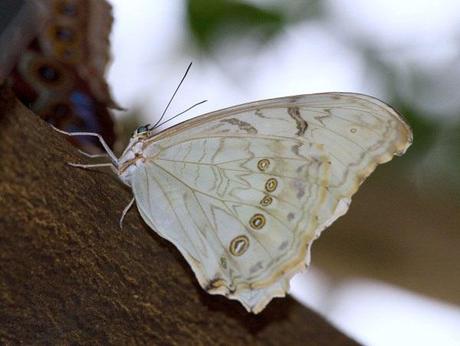Because of the covid pandemic more and more people are seeing rare and unusual butterflies in their own gardens. OK, so you might not see any of the ten on this list, but if you have, you can consider yourself rather lucky indeed because they are the worlds rarest and most unusual butterflies you will ever see. Sadly these pictures might be the only way you will see these beautiful insects, but a picture is all you need to appreciate their beauty…

Glasswing Butterfly (Greta oto)
Greta oto is a species of brush-footed butterfly and member of the subfamily Danainae, tribe Ithomiini, and subtribe Godyridina. It is known by the common name glasswing butterfly for its transparent wings, which allow it to camouflage without extensive colouration.

Cramer’s eighty-eight Butterfly (Diaethria clymena)
Diaethria clymena, the Cramer’s eighty-eight, is a species of butterfly of the family Nymphalidae. It is found from Mexico to Peru and Brazil. It was discovered to science by Pieter Cramer, in a fascicle of De uitlandsche Kapellen, 1775. The wingspan is about 30–40 millimetres.

White Morpho Butterfly (Morpho polyphemus)
Morpho polyphemus, the white morpho or Polyphemus white morpho, is a white butterfly of Mexico and Central America, ranging as far south as Costa Rica. As suggested by its name, this is one of the relatively few morphos that is white rather than blue.

Large Blue Butterfly (Phengaris arion)
With its wingspan of more than two inches, the large blue is the largest and rarest of all nine British blue butterflies. It was last recorded at Minchinhampton and Rodborough Common 150 years ago and was declared extinct in Britain in 1979. But it has been successfully reintroduced into the English countryside after Natural England and partners created the ideal habitat using cows grazing meadows.

Blue Moon Butterfly (Hypolimnas bolina)
Hypolimnas bolina, the great eggfly, common eggfly or in New Zealand the blue moon butterfly is a species of nymphalid butterfly found from Madagascar to Asia and Australia. There are thousands of species in the family “Nymphalidae” but the blue moon butterfly is among the most beautiful of them.

Neotropical butterfly (Rhetus arcius)
Rhetus is a Neotropical metalmark butterfly genus. They are small (wingspan 25–30 mm), fast-flying, strikingly iridescent, and have long wing tails. They are found in open areas, including tracks of primary rainforest. The genus was erected by William John Swainson in 1829.

Cleonus Metalmark (Detritivora cleonus)
The neotropical Riodinidae includes a group of genera, namely Charis, Chalodeta, Detritivora and Dachetola which are characterised by having orange borders containing a series of black dots, and bordered either side by metallic silver lines.

Common Rose (Pachliopta aristolochiae)
Pachliopta aristolochiae, the common rose, is a swallowtail butterfly belonging to the genus Pachliopta, the roses, or red-bodied swallowtails. It is a common butterfly that is extensively distributed across the south and southeast Asia.

Western Pygmy Blue Butterfly (Brephidium exile)
With a wingspan of 0.5 inch (1.3 centimetres), the Western pygmy blue is the smallest known butterfly in the world. It belongs to the same family as the blue butterflies, and as in the blues, the female is a little larger than the male.

Least Skipper (Ancyloxypha numitor)
The Least Skipper is aptly named, as it is the smallest skipper in the state. This skipper is often seen flying very low through tall grasses adjacent to ponds, small lakes, rivers, or streams. They have a weak, Satyrinae-like flight that makes them look as if they are dying.
Have you seen any of these butterflies or have taken a picture of one yourself? If so why not leave a comment so we can all enjoy these wonderful insects.

